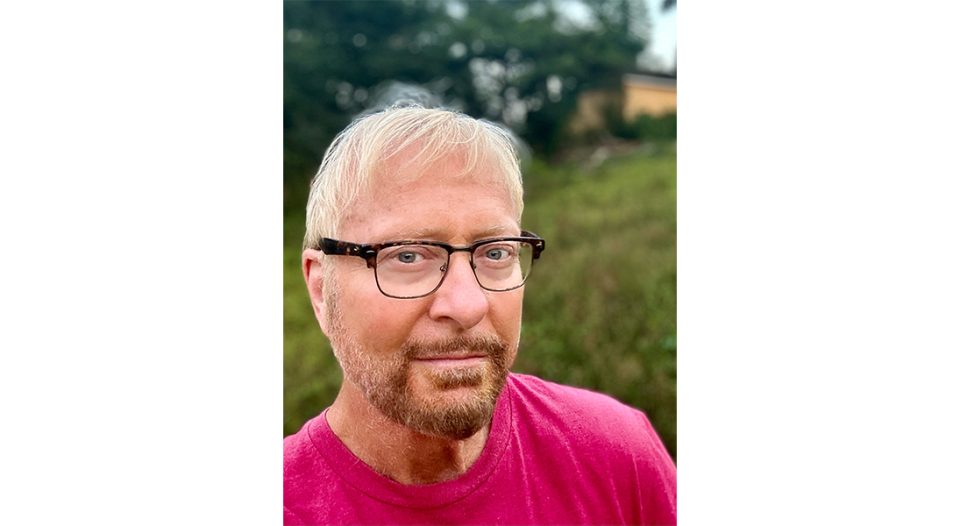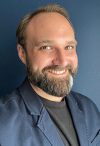St. Luke Lutheran Church, New York City
Founder, Let’s Send These Kids to School; digital art manager, Carolina Human Reinvestment
I have been a member of St Luke Lutheran Church of Times Square for over 25 years. Visiting my recently widowed father in March 2020 at the beginning of the COVID-19 crisis, I found myself displaced to South Carolina. I became very much involved in the creation of a community garden, sponsored by Carolina Human Reinvestment. I also became involved at my father’s church, The Abbey at Pawleys Island, S.C.
I was chair of the property committee at St. Luke until the beginning of this year—despite the fact that I had only briefly been on the property over the past two and a half years! I’m currently in Uganda, where I am working and worshiping with Roman Catholic Franciscan friars. What I find interesting is none of this was really planned by me—I believe it’s been orchestrated by the Holy Spirit. We as Christians serve one Lord. Perhaps helping bridge the gaps of multiple faith practices is an unexpected side effect of my life’s mission. Through this, I am developing a natural ecumenical heart.
In 2016, I founded Let’s Send These Kids to School, a recognized 501(c) that funds the education of young Ugandan adults who have no financial recourse to pay for school. Some are in high school, some trade school and some in university. We also attend to personal needs on a case-by-case basis. For example, one young lady had her laptop stolen, so we provided her with a new one. Another young man has received his certificate in plumbing from a trade school, and we are looking into purchasing equipment so he can start a business of his own.
We’ve had eight university graduations for our students in the course of our seven-year existence. Each one affects me greatly. To see the transformation of someone who may have been resigned to a life of poverty become a productive member of society is fulfilling in a way nothing else has ever been.
To see the transformation of someone who may have been resigned to a life of poverty become a productive member of society is fulfilling in a way nothing else has ever been.
The organization began when I received a random Facebook Messenger message from a young Sudanese war refugee living in a camp in Uganda. His father had been murdered, his village burnt to the ground, and friends were killed in a brutal uprising in their ongoing civil war. He, his mother and his sister escaped, living on the banks of the Nile for days until a U.N. mission team escorted them down the river, on foot, to settle in the refugee camp. All he was requesting from me were school fees so he could continue his education. I realized it would take very little from me but would completely change his life.
A friend of mine at St. Luke was connected to a Ugandan Capuchin priest, Father Godwin Ogam, whom she had known from language school in Tanzania. She put me in touch with him. He traveled six and a half hours from Entebbe to Arua to visit the young man in the camp and confirm his legitimacy and need. I was able to raise over $1,000 on a GoFundMe campaign for him on Facebook in less than 36 hours.
Our organizational trips to Uganda give me a chance to discuss in depth our plans with my partner and friend Father Ogam—things just not possible to discuss in phone calls and texts. We also meet with the students, get to know them personally and discuss their plans. And, of course, get photos. The photos, the storytelling, these are important public relation aspects that our fundraising relies on.
My enjoyment of photography is twofold. As a seeker of beauty, to capture a scene and to present it or even elevate it, then share that image to entertain and inspire, is a personal joy. As one with a mission spirit, using photography as a storytelling tool in order to effect change becomes a spiritual as well as artistic exercise.
My photography exhibit “7,000 Miles Away” was held at Our Saviour’s Atonement Lutheran Church in New York City. It was a collection of photos from my trips to Uganda, highlighting daily life in the country, the Ugandans’ open show of faith—in a country that’s 85% Christian—and bringing awareness to Let’s Send These Kids to School.
I try to live in a state of thanksgiving. Very little of my current life was something I planned.
Carolina Human Reinvestment (CHRSC) is a mentoring and after-school program. During the COVID crisis, CHRSC Executive Director Giany Guedjo took the opportunity to create a community garden. The organization has now expanded, sponsoring the organization FoodShare South Carolina in the Georgetown County area.
I have done public relations and social media for CHRSC’s community garden from the beginning. I was also actively involved in its physical construction. Social media has been an integral part of the garden’s success, and my photography helped to define and create an image that attracted a huge volunteer base and local business involvement. To see the community garden grow beyond any of our expectations has been meaningful beyond belief.
I try to live in a state of thanksgiving. Very little of my current life was something I planned. Yet it is a life that brings me greater joy and is aligned more with my Christian sensibility than anything I might have planned. For this reason, I find myself in an active state of thanksgiving. I also ask for forgiveness. A lot.
Grace to me is God’s deep understanding of the complexities of each individual human heart, an understanding that’s light years beyond any human understanding. And—to put it in simple layman’s terms—his desire to give us a “free pass” if only we accept his son, the Lord Jesus Christ.
I’m a Lutheran because the most enjoyable times of my youth, my most formative years, were church-related. The hymns, the liturgy, it all speaks to the essence of who I am.




